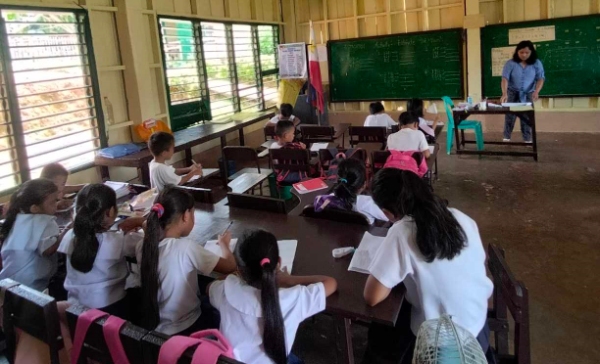Special Hardship Allowance makes a difference for teachers: UNICEF
by John Joseph Basijan / November 20, 2024
Teaching is a vocation, stemming from a passion to help hone young minds and unlock their potential for their future success. For some, such passion runs deep that they are willing to cross rivers and climb mountains to demonstrate their commitment to educating children in far-flung areas.
This is the reality of teachers like Albert Azul of Pinanag-an Elementary School in Borongan City, Eastern Samar. Every Monday, he and fellow teachers would embark on a two-hour journey involving motorcycle and motorboat rides to cross a river and a mountain to get to their school. Given the long journey, Albert would stay there throughout the week and only go back home every Friday afternoon.
This weekly journey would often be dangerous, according to Albert. “There are times that the current is so strong that it’ll be hard to walk or even go by boat. There are even instances when I had to jump off the boat because it can’t stand the water current,” he said.

Special Hardship Allowance
Albert is among the hundreds of teachers throughout the country who are assigned in remote, hard-to-travel-to or high-risk areas, and mostly handle multiple classes in different grade levels at once. Despite being exposed to hardships every single day, however, these teachers continue to push through.
Teachers who work in such dire conditions receive a Special Hardship Allowance (SHA) equivalent to 25 percent of their monthly salaries, in accordance with the 1966 Magna Carta for Public School Teachers. Their eligibility is determined by the Hardship Index, developed in partnership with UNICEF Philippines, which measures the degree of hardship of a particular school through factors like commute time, facilities, poverty, amenities, and disaster risks. The higher the score, the higher the degree of hardship.
Last year, the Department of Education (DepEd) lowered the index cut-off from 0.37 to 0.33, allowing more teachers to qualify. So far, the SHA has supported at least 4,000 schools and at least 38,000 educators annually. Albert, for instance, was able to fund himself towards a master’s degree at Eastern Samar State University.
More can be done
However, Albert shared that not all deserving teachers were deemed eligible for the SHA.
He recounted the story of kindergarten teacher Rho-ann Calvadores who works in a high-risk school, though she is not teaching a multigrade class. Rho-ann is currently facing significant hospital bills for her grandmother’s treatment. To help out with their fellow educator, Albert and his co-teachers would donate P1,000 per quarter to Rho-Ann.

Her ordeal highlights the opportunities to further improve the distribution of the SHA. For instance, some of the variables used in the index are difficult to collect, and, unfortunately, some schools enter the wrong data.
DepEd and UNICEF Philippines are currently working to improve the index, as well as the eventual allowance distribution for 2025 so it would reflect the situation on the ground. So far, initial simulation results are already looking better than the current implementation.
Albert’s story, and the continuous partnership between DepEd and UNICEF Philippines, show how a strong sense of community can help address some of the issues facing the country’s education system. EVD
Read also
- How ‘My Dream In A Shoebox’ equips the Filipino youth for tomorrow’s challenges
- Share the holiday cheer with these Christmas cards for a cause
- Digido, UnaCash bolster commitment to education, bayanihan with Brigada Eskwela support

Pure multigrade classes in Pinanag-an Elementary School in Borongan City, Eastern Samar. | Photo: Albert Azul


